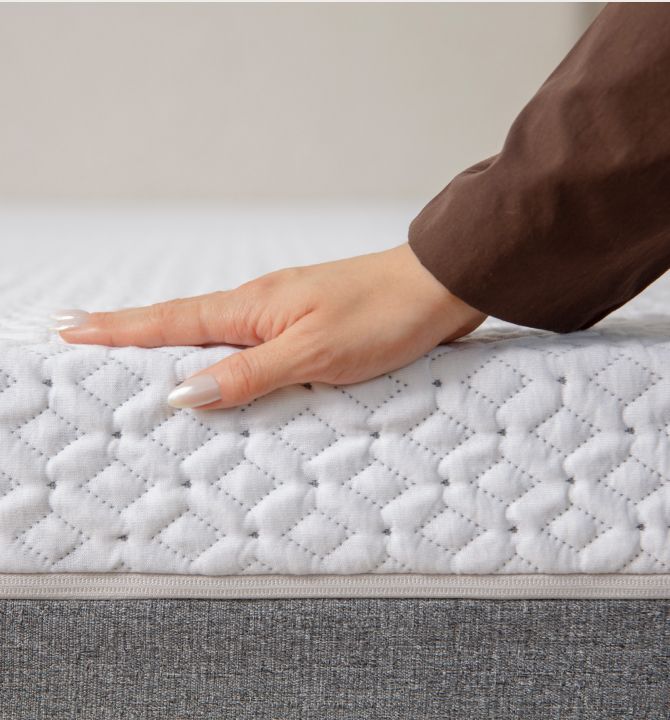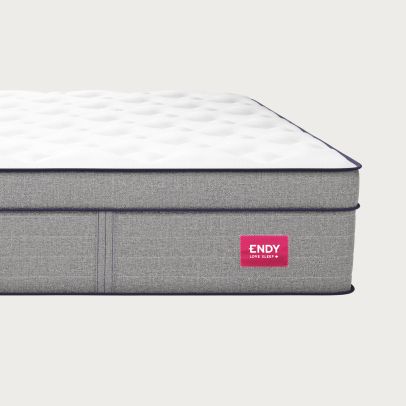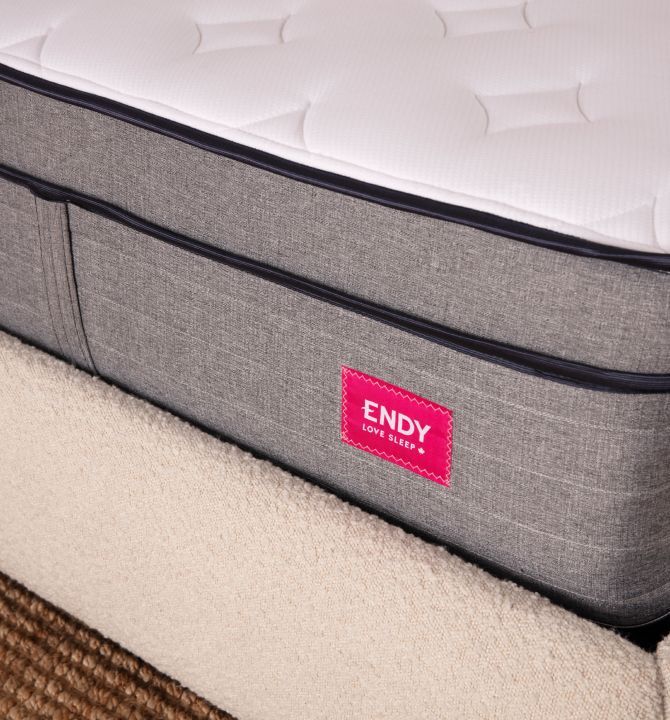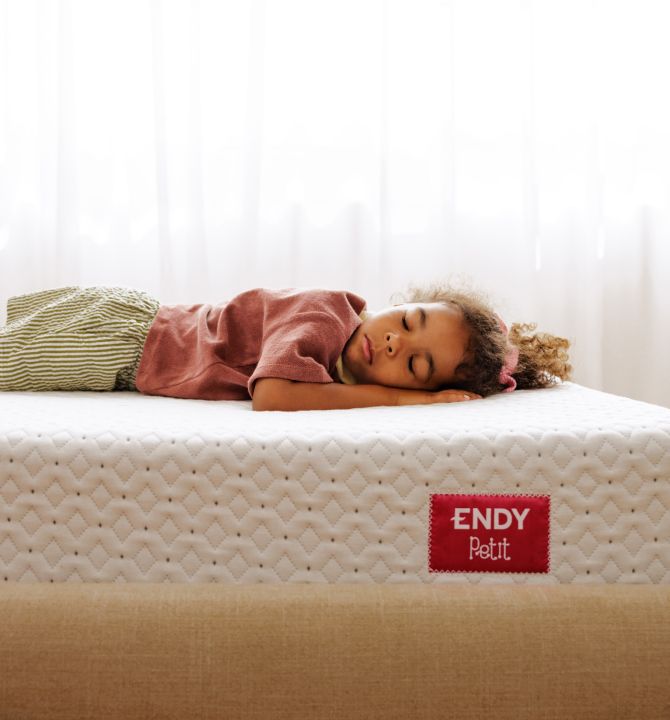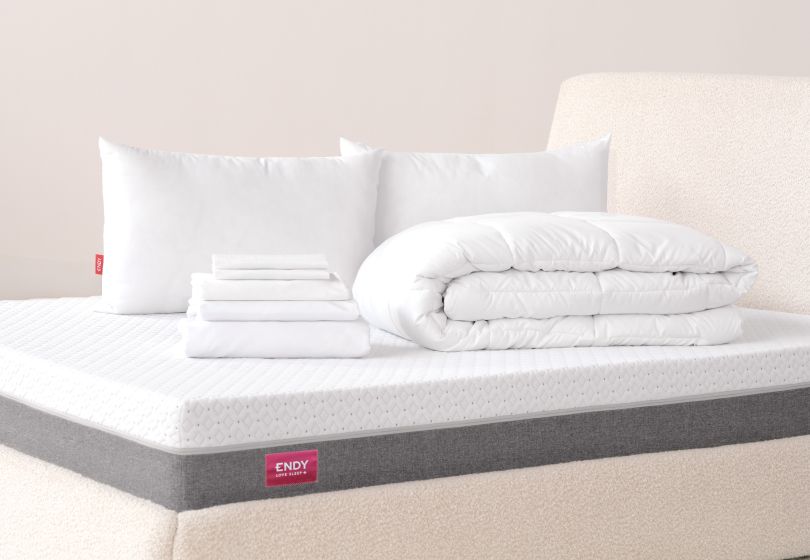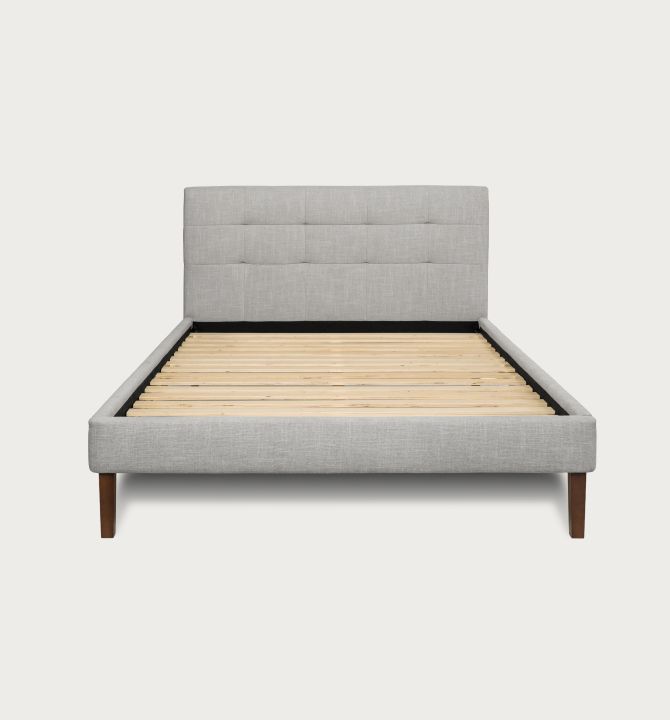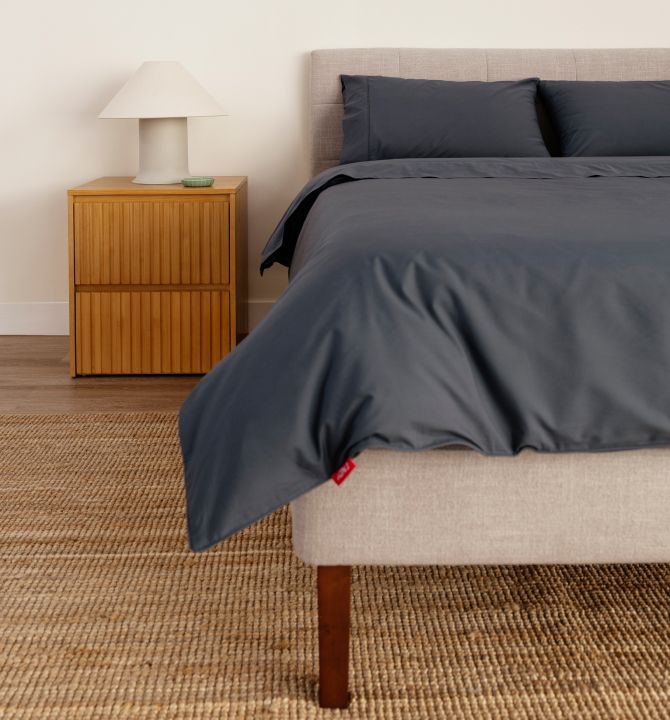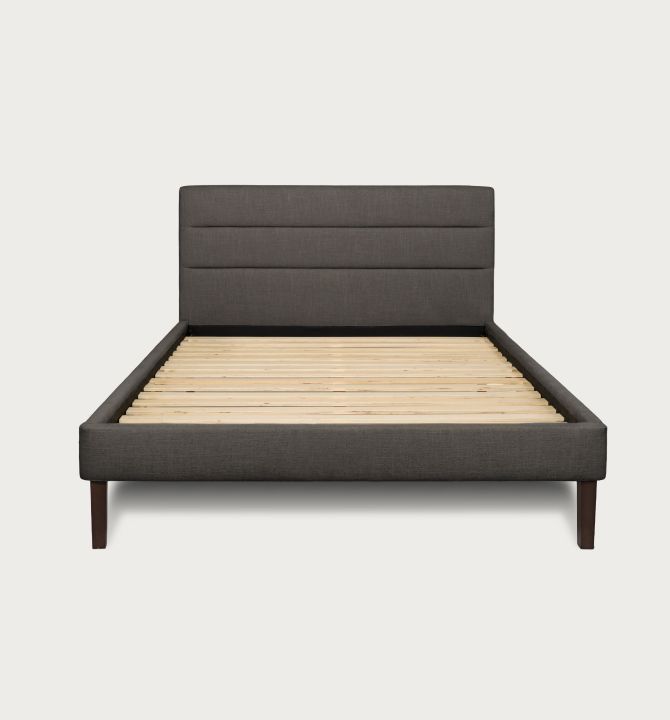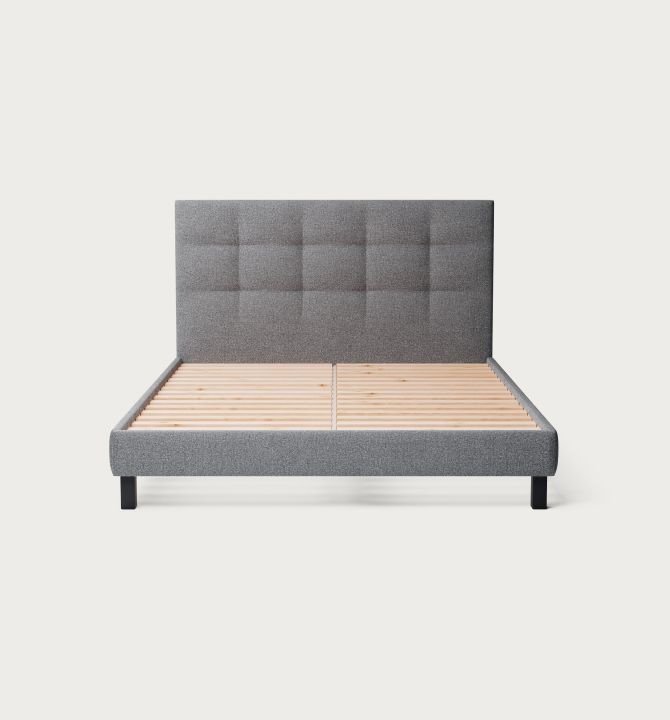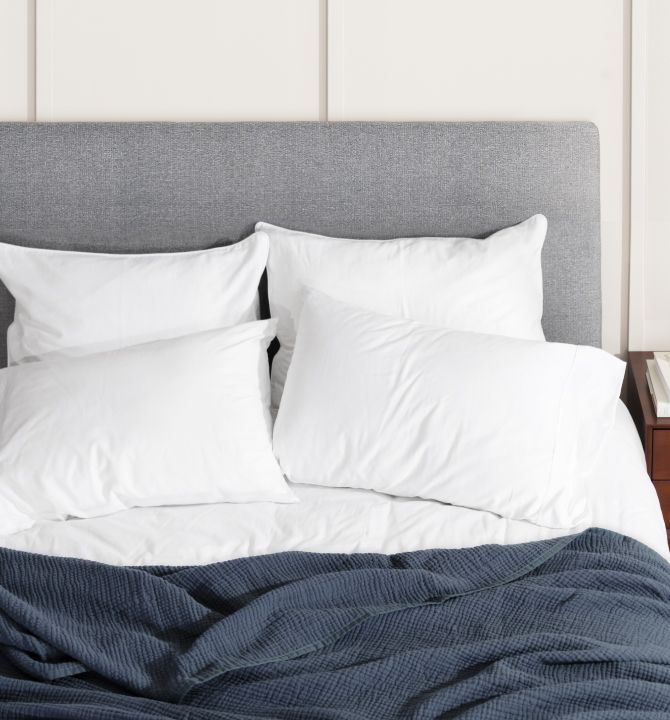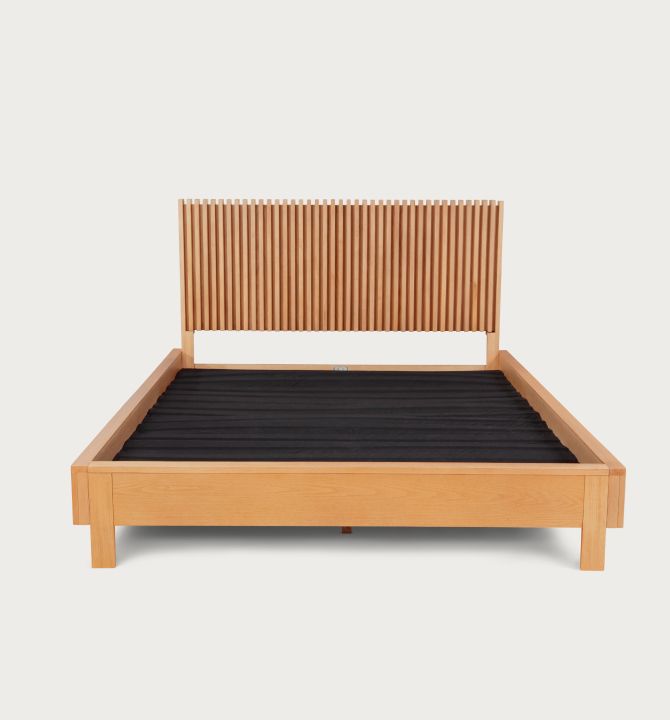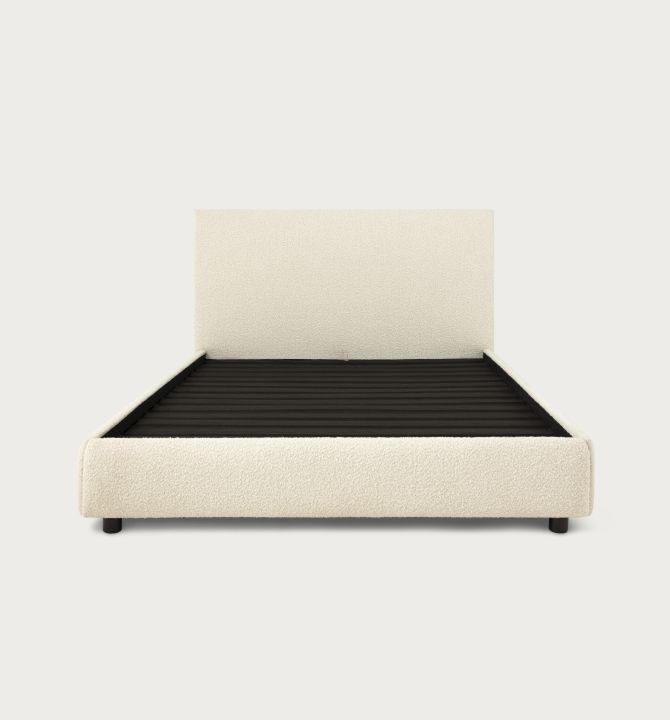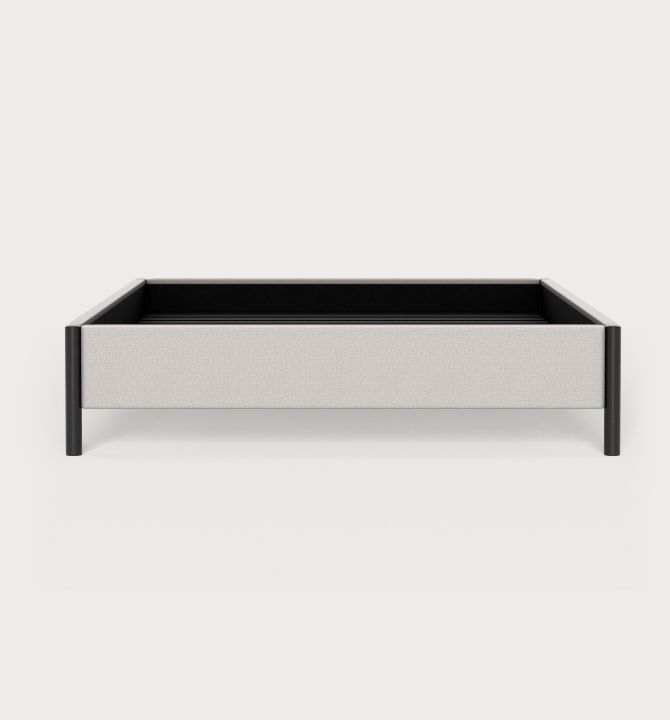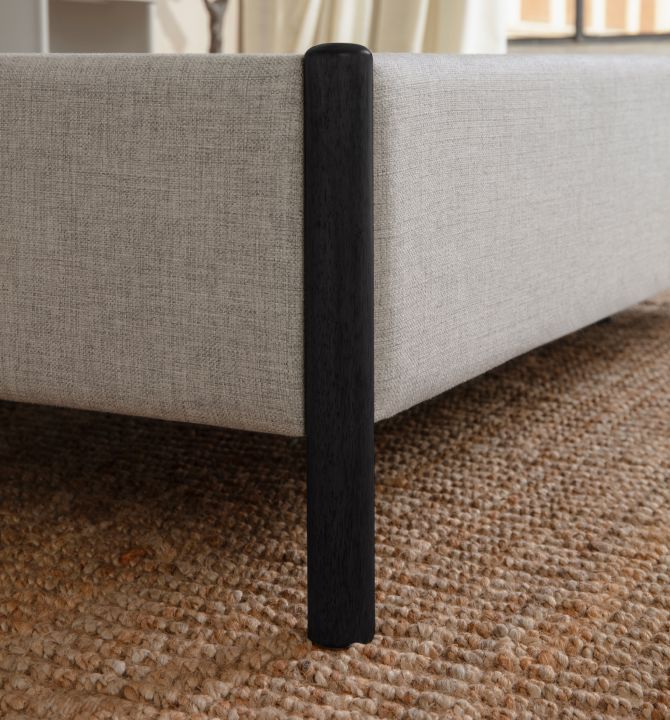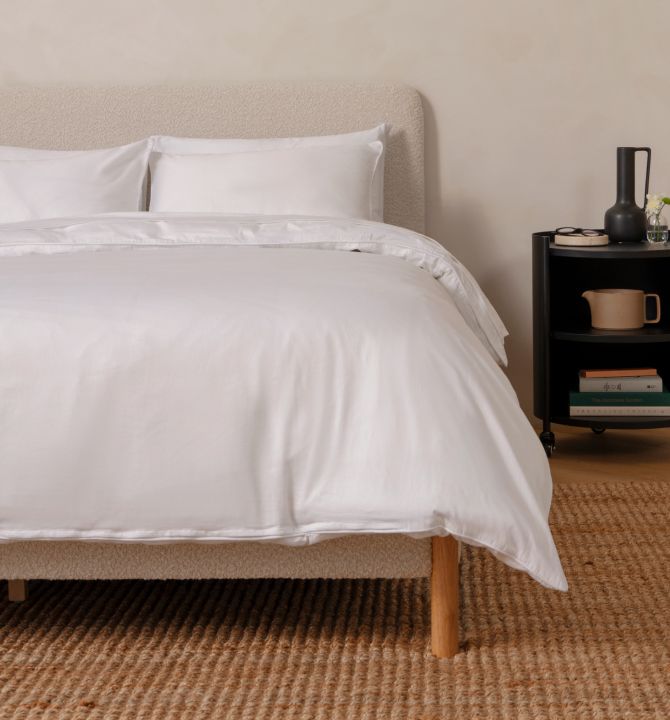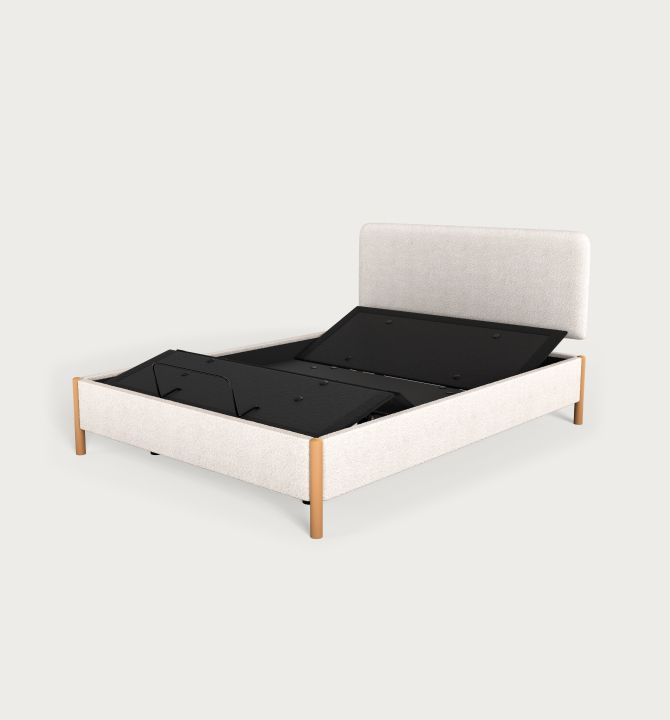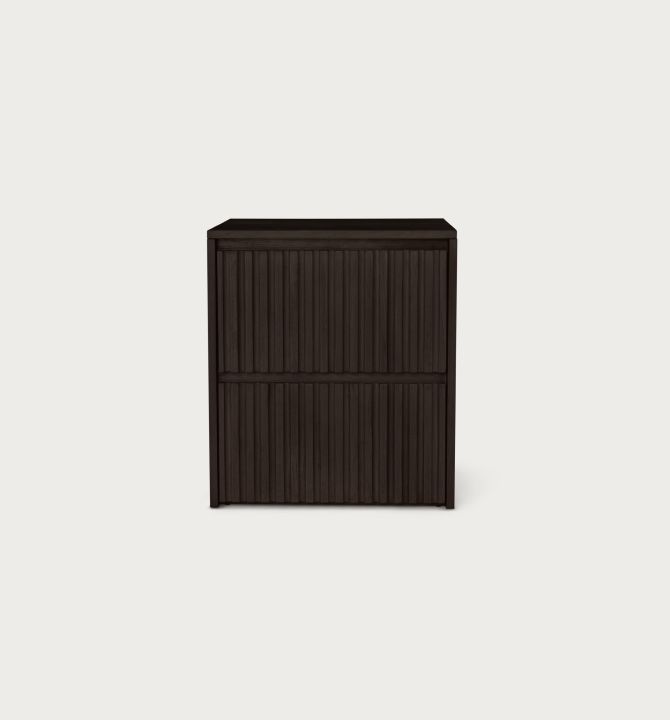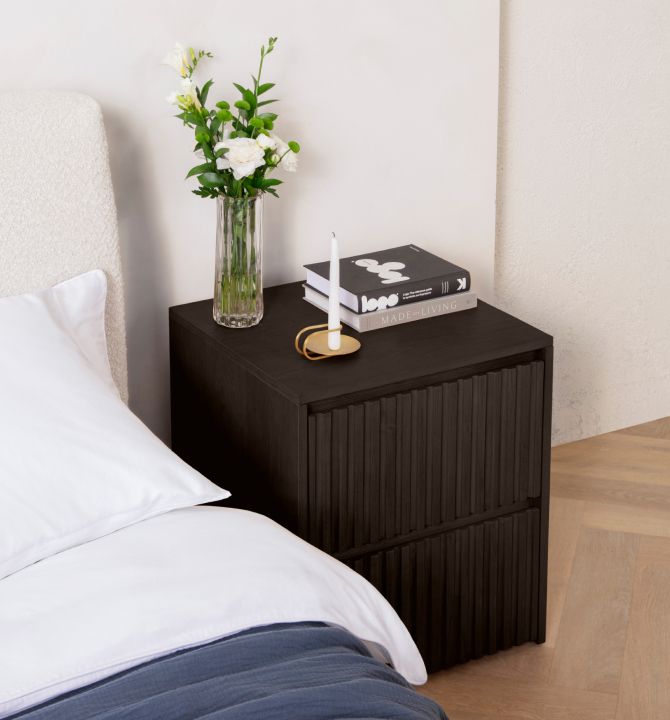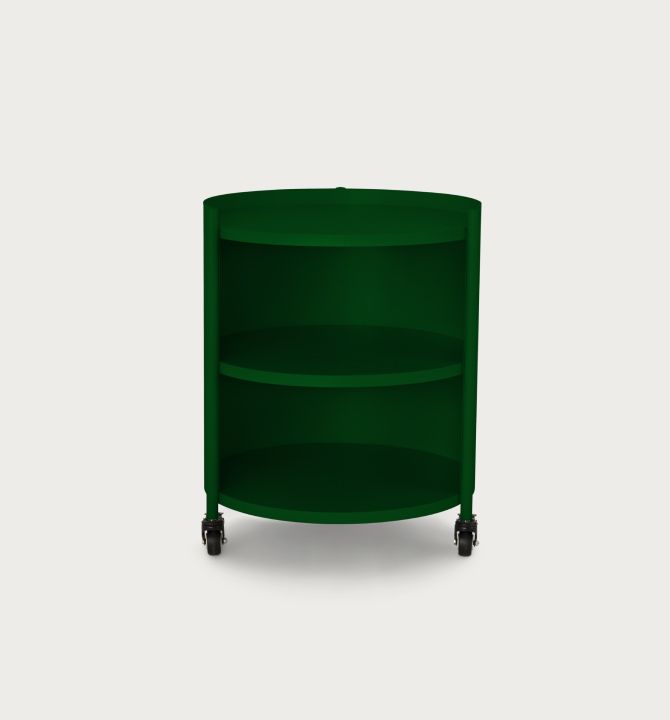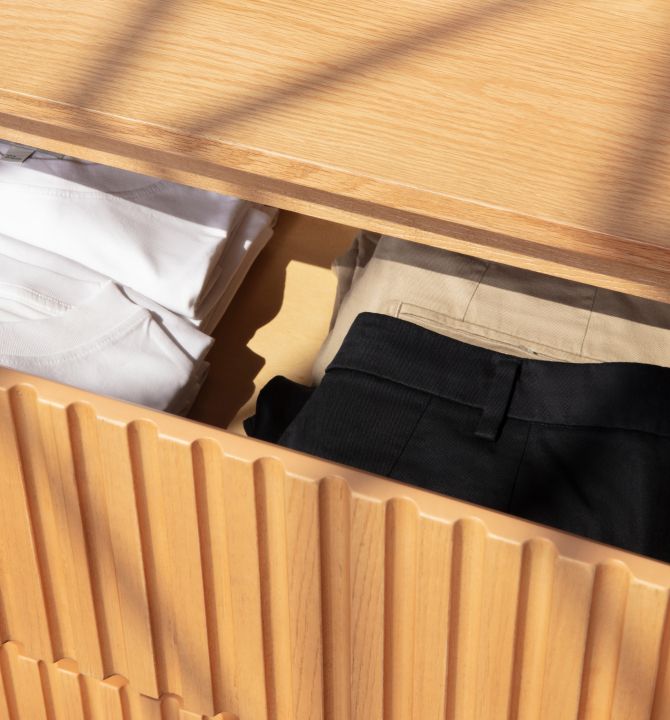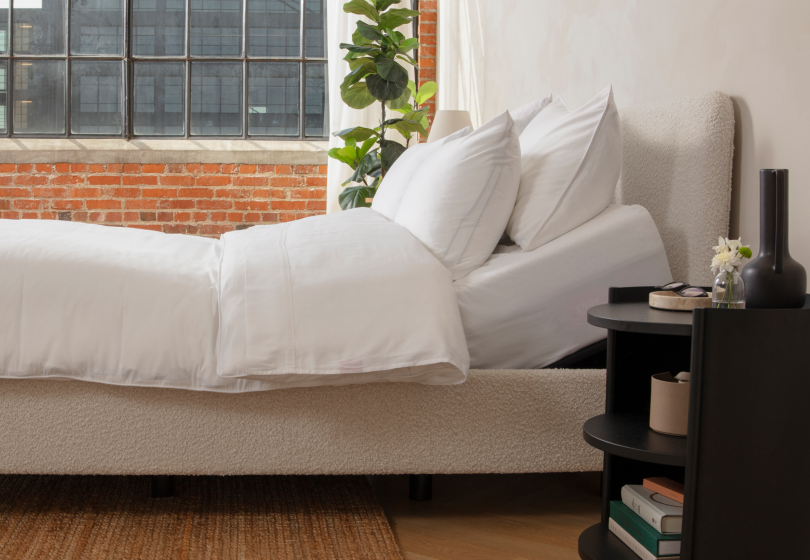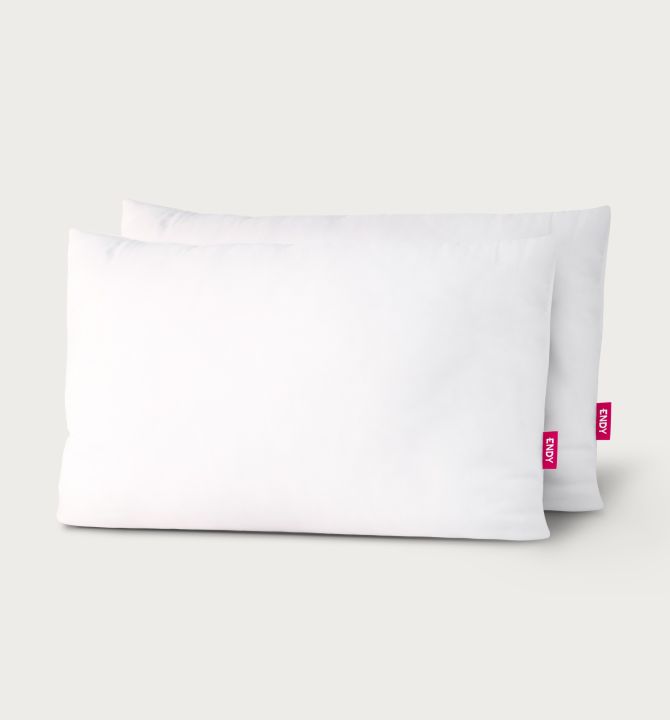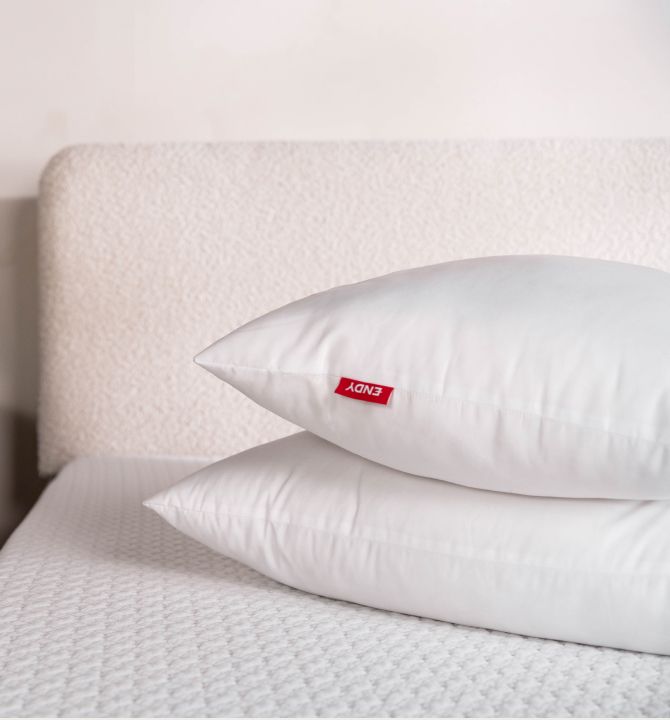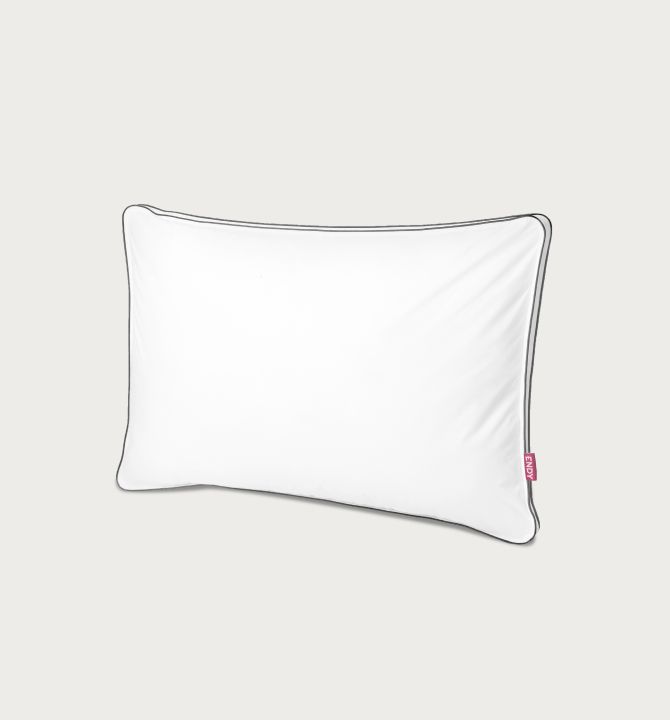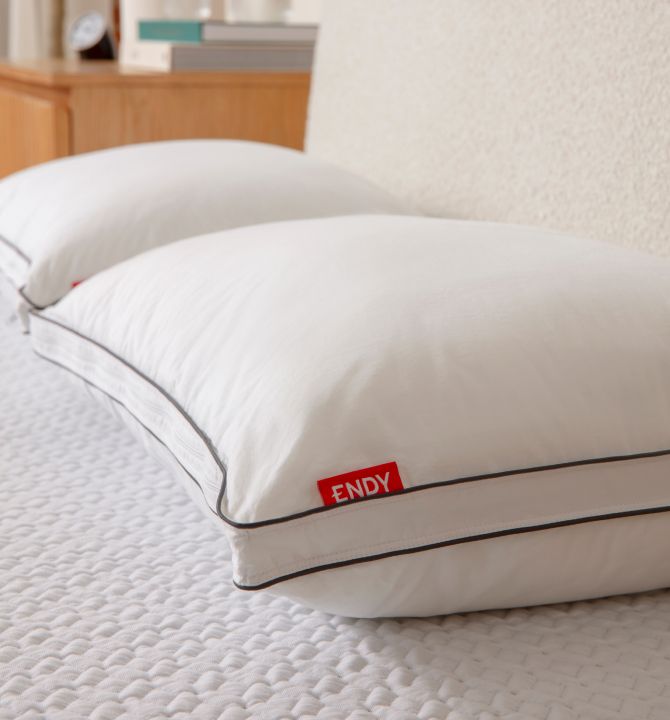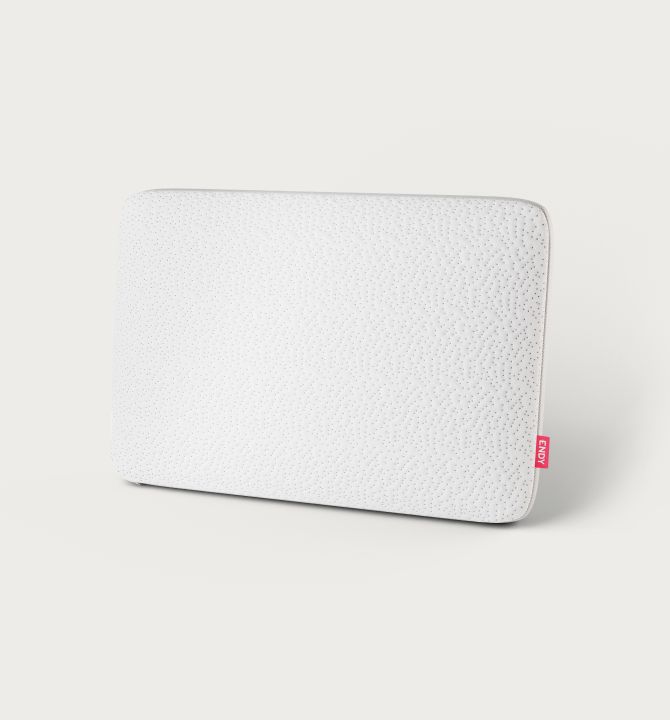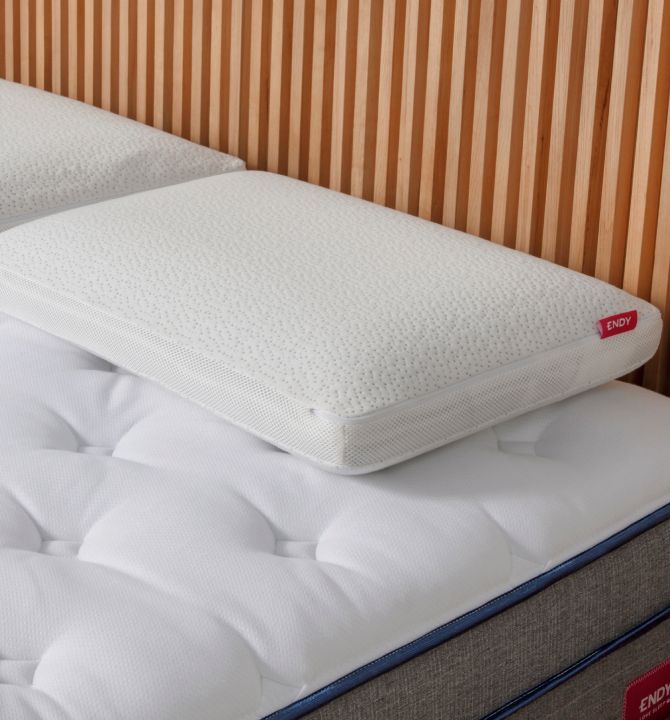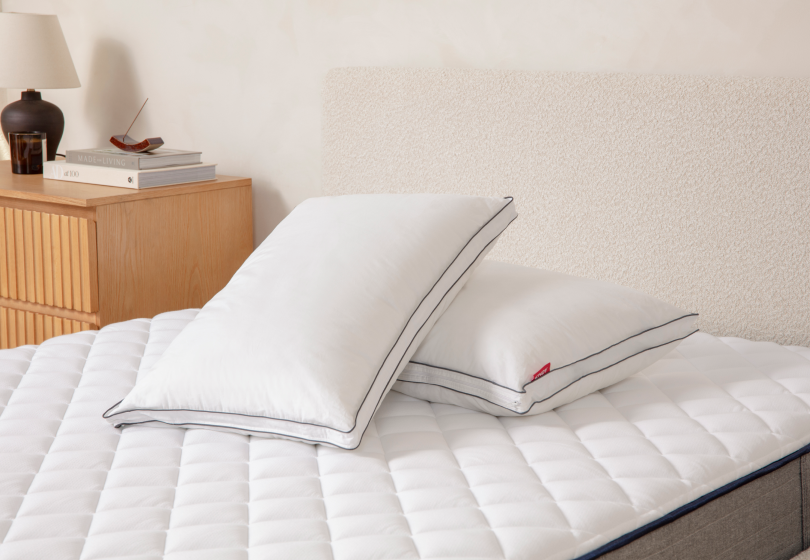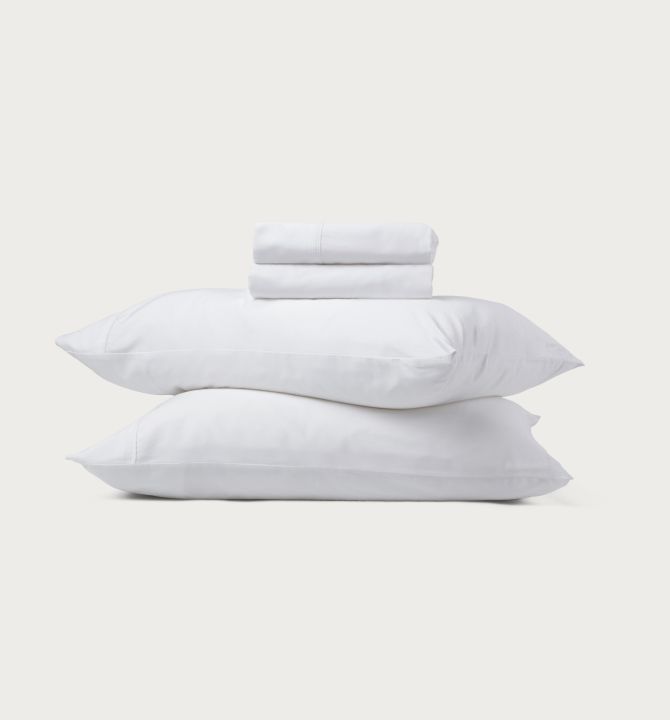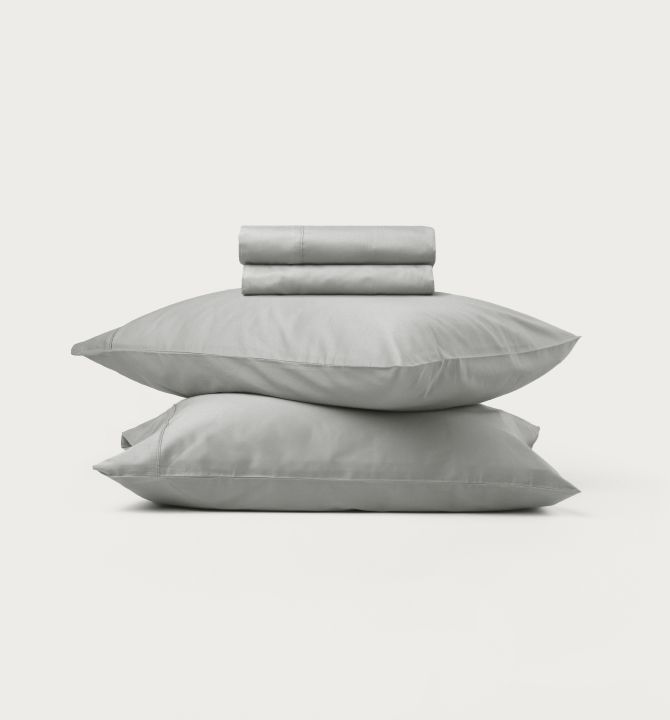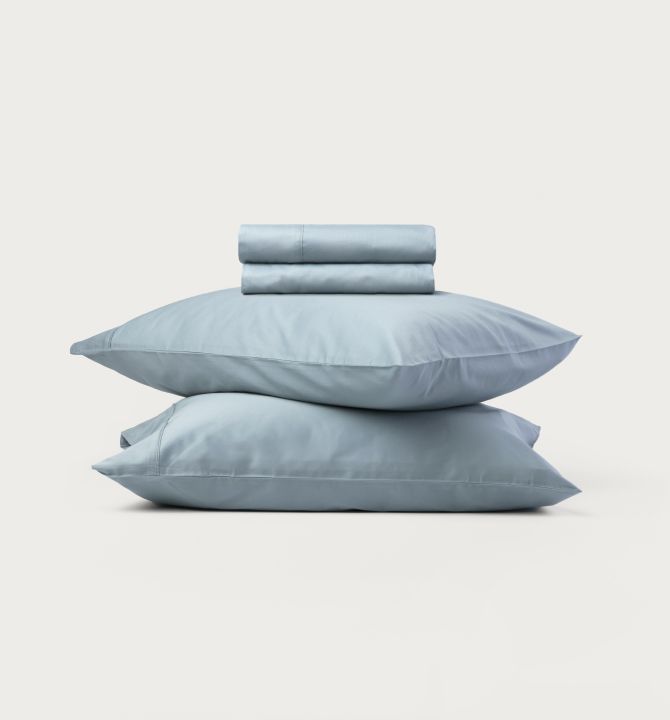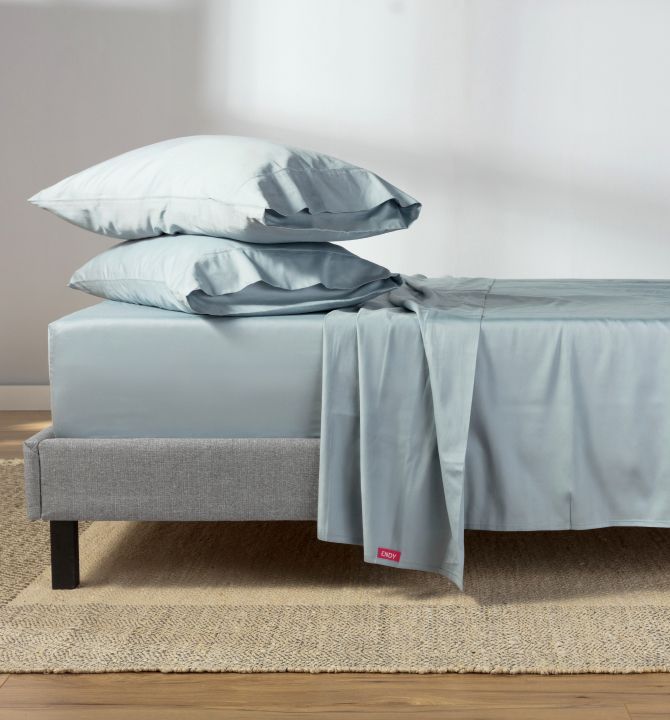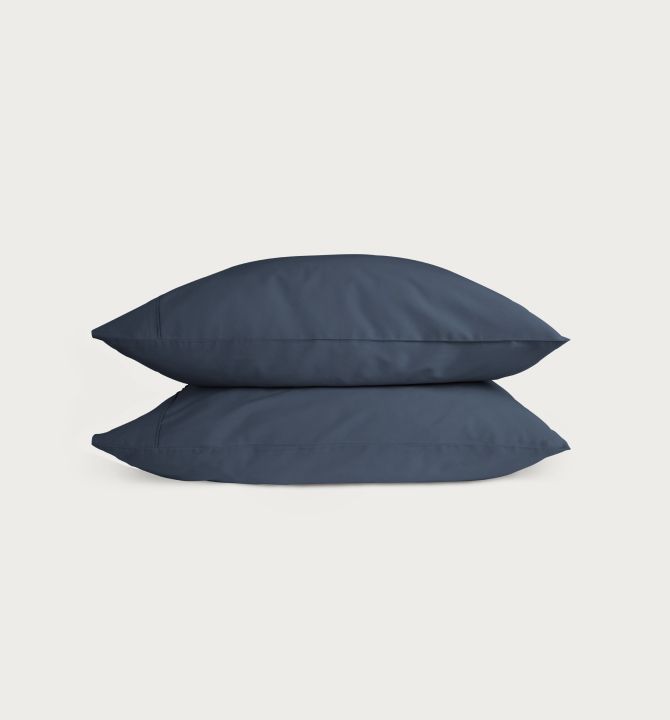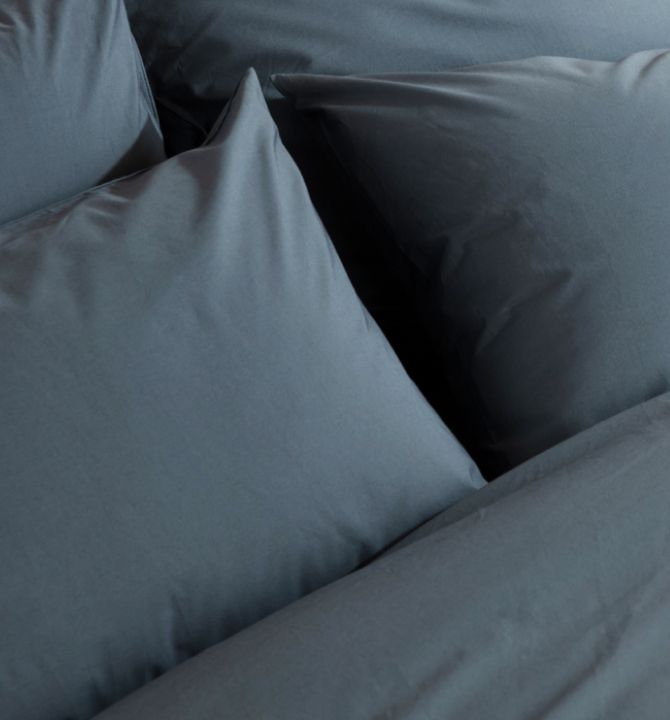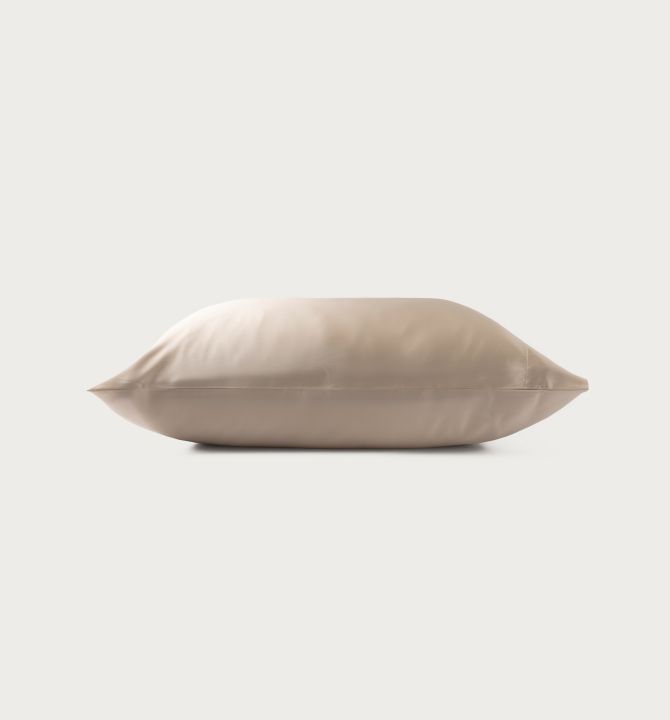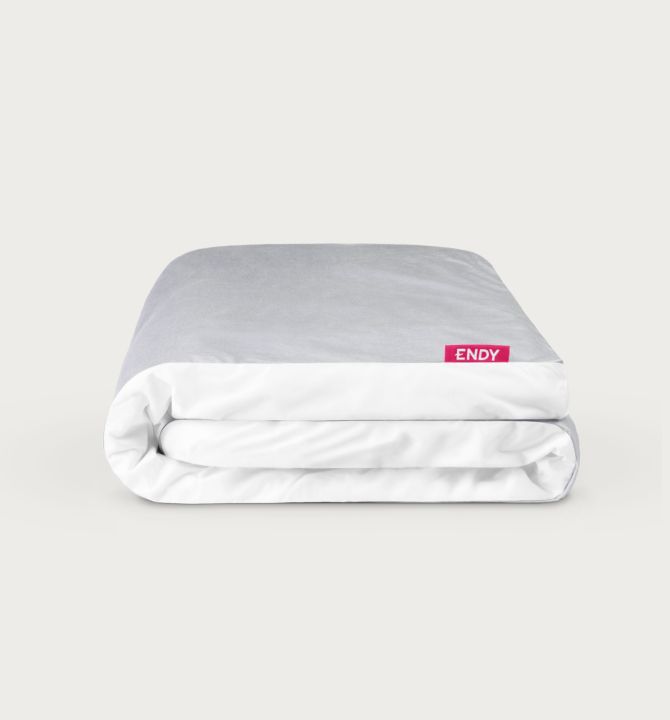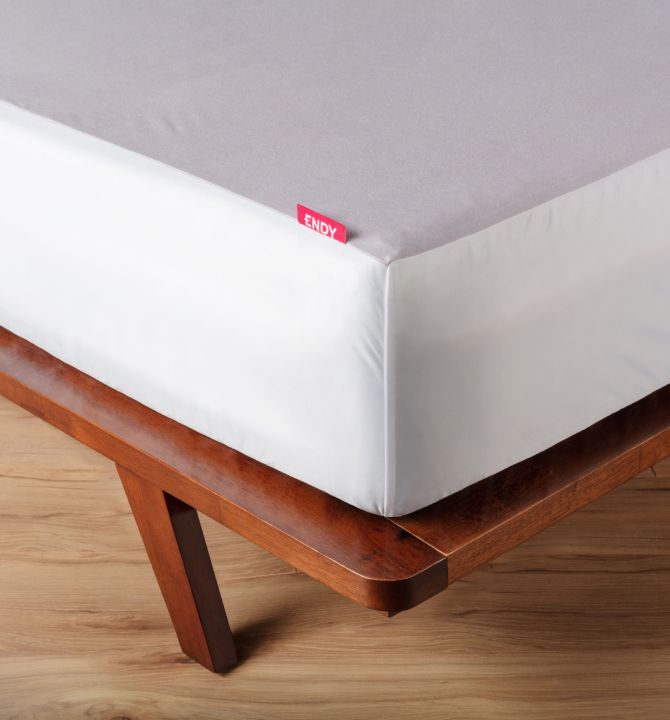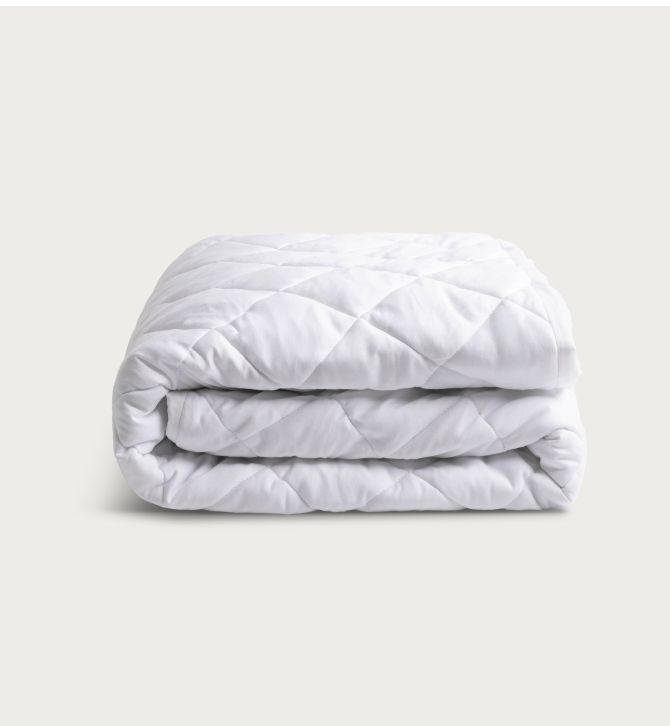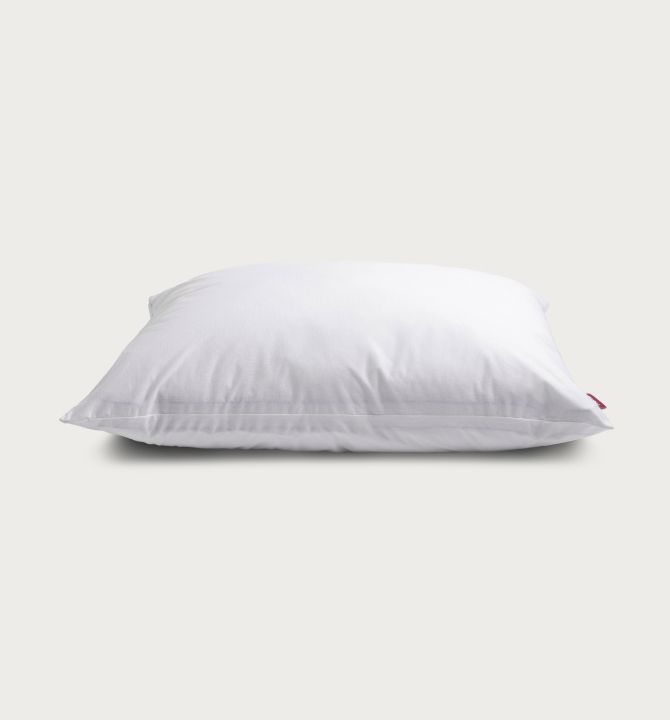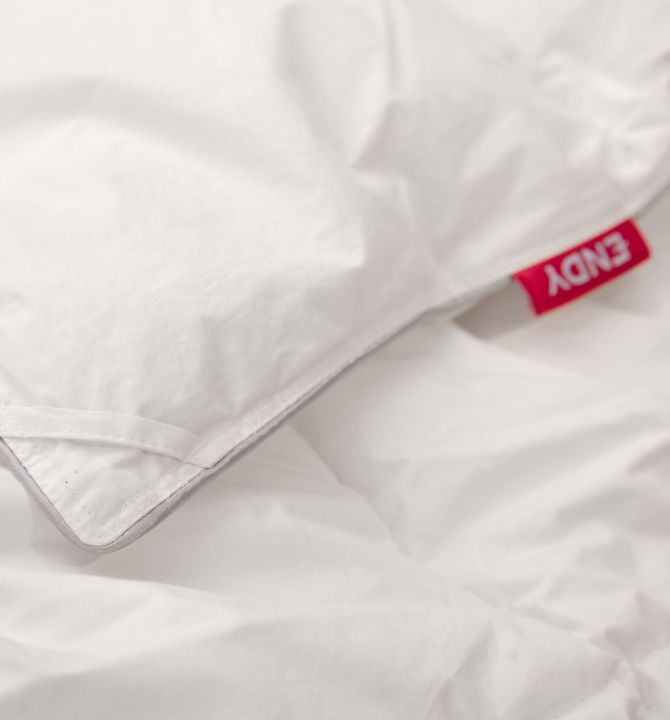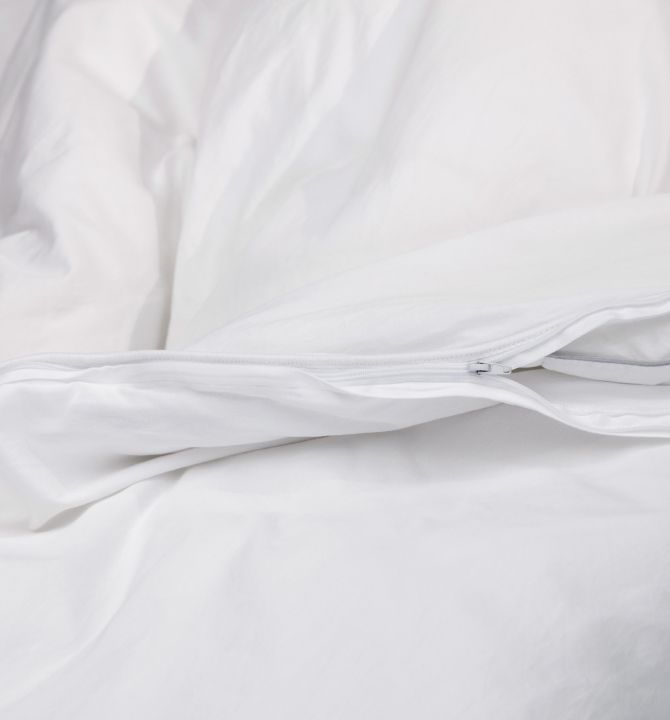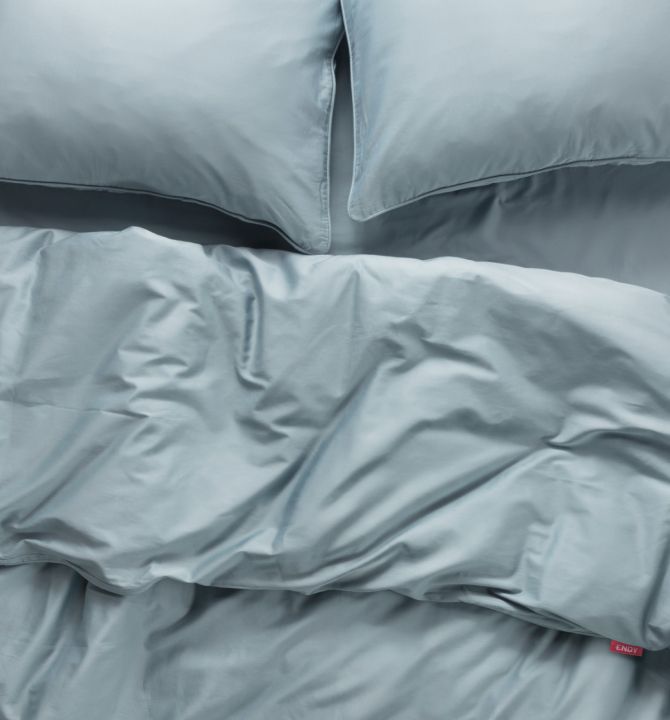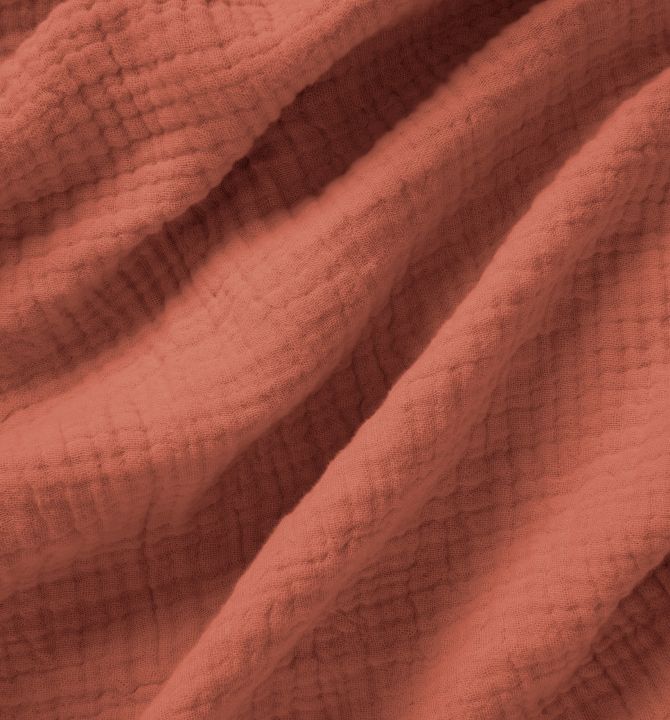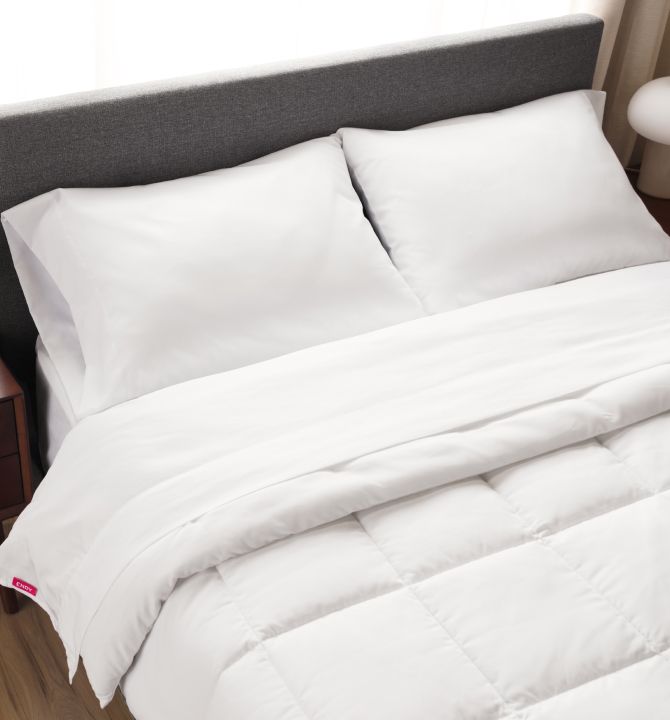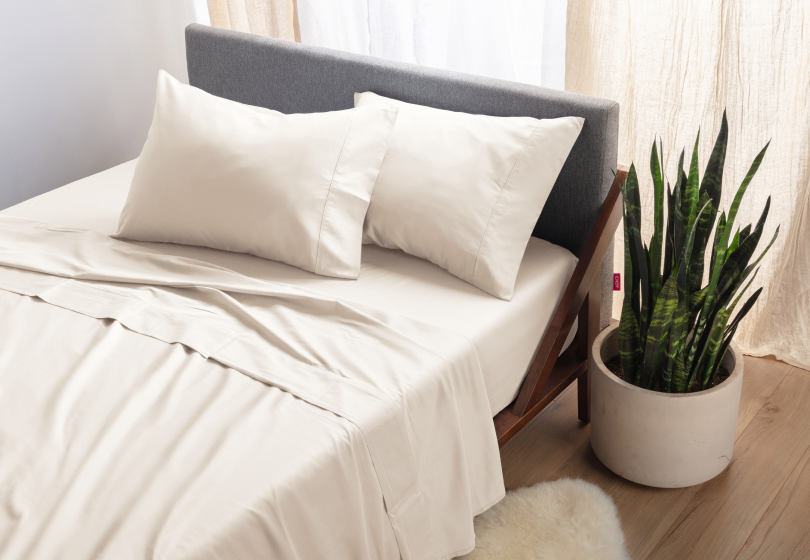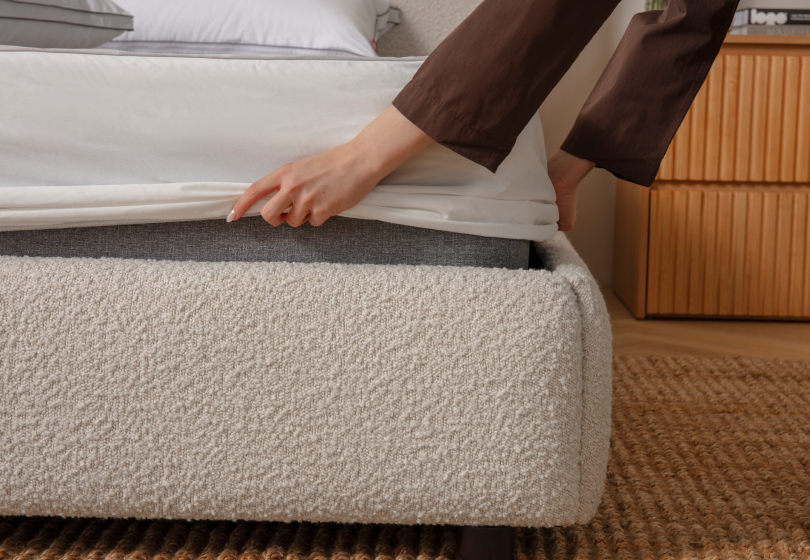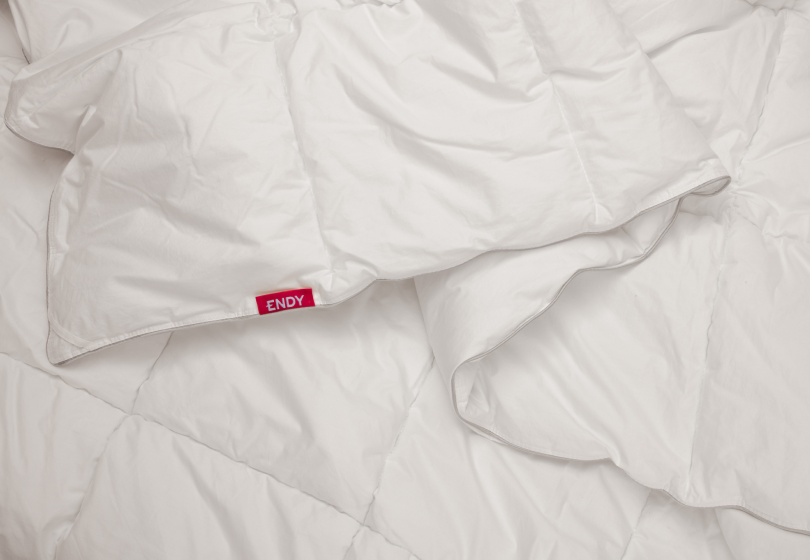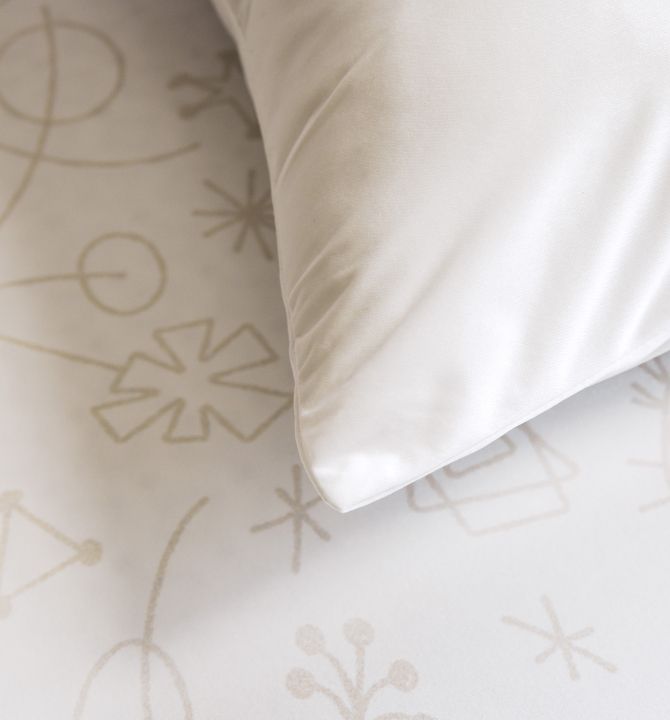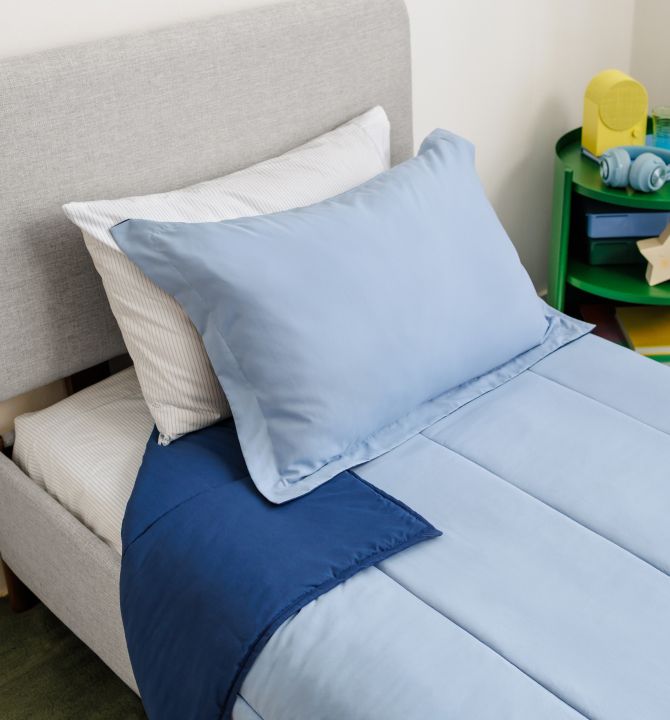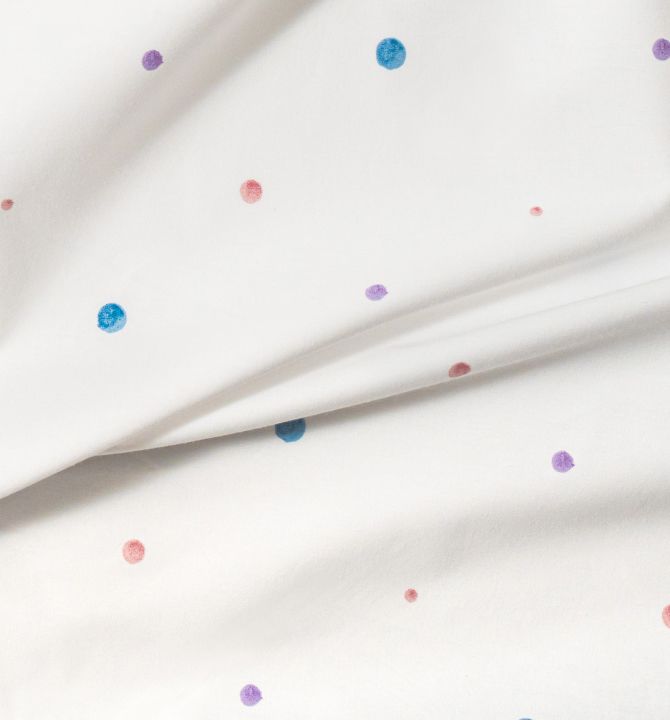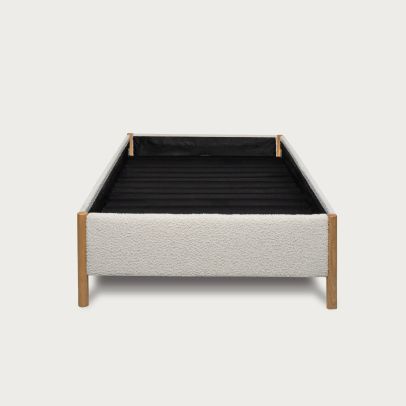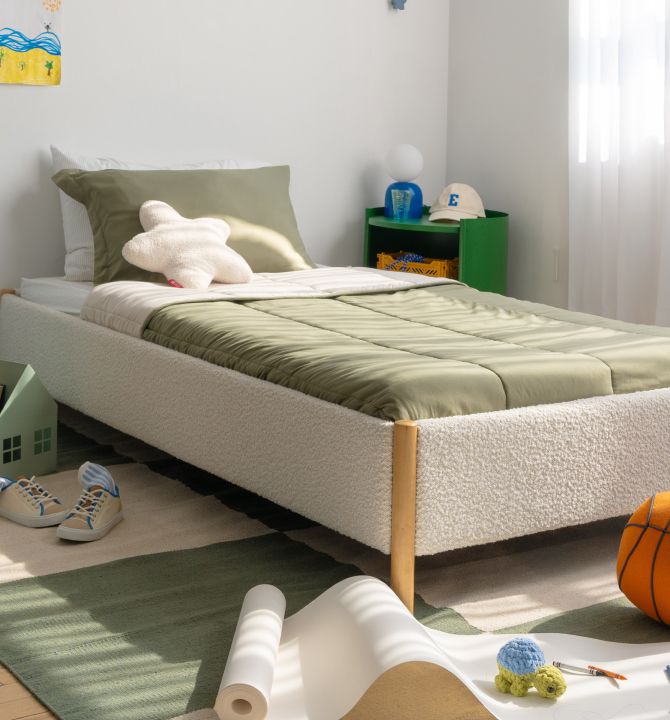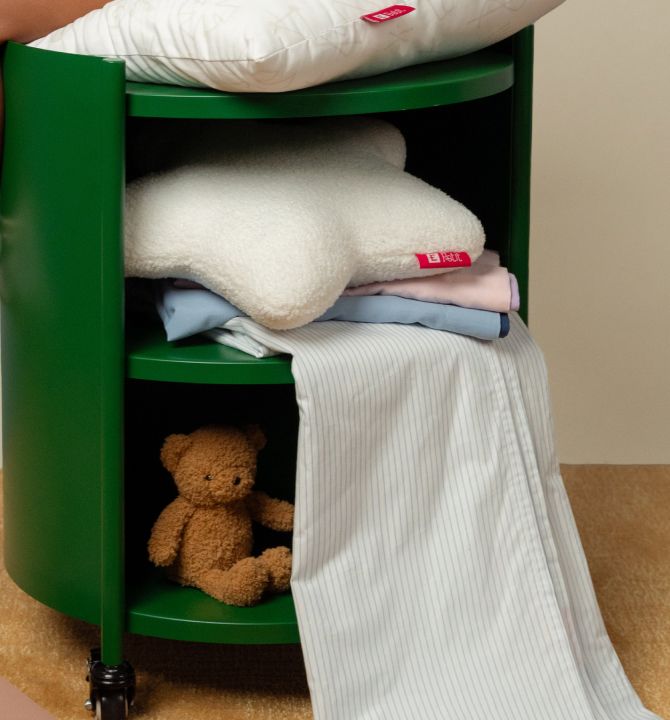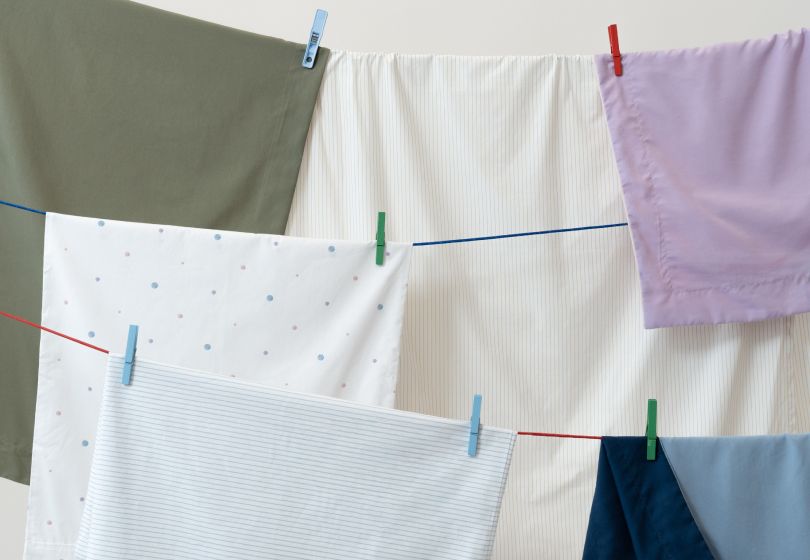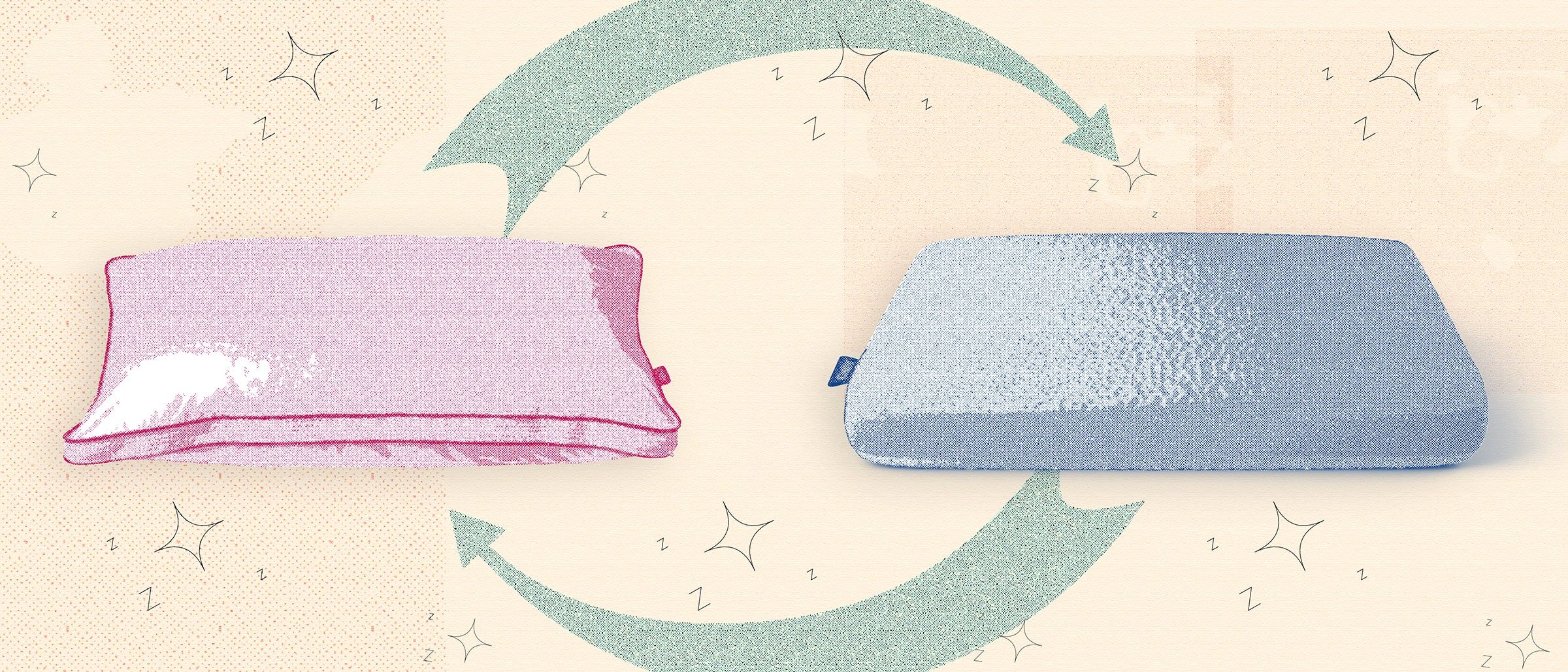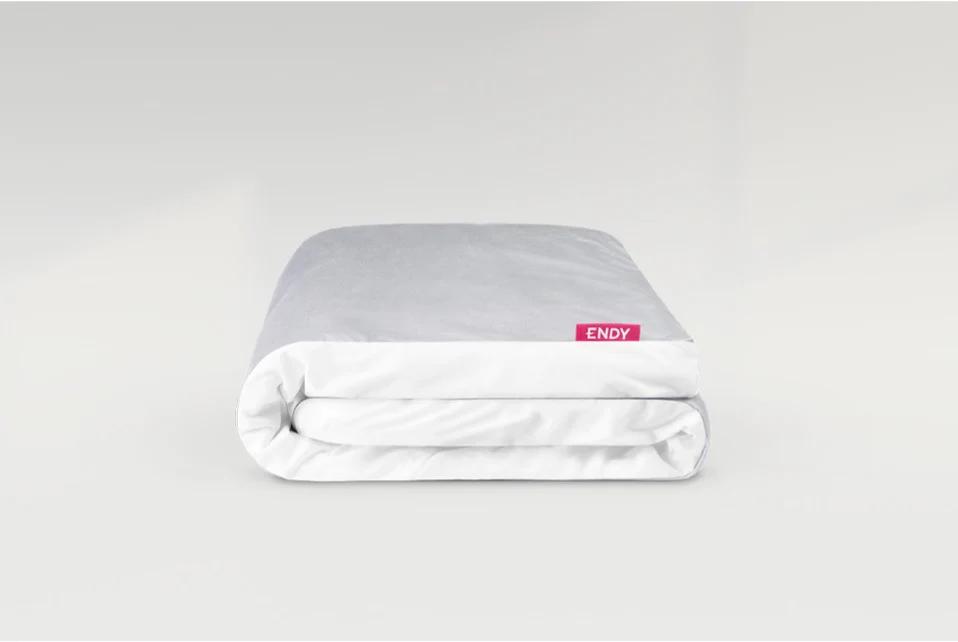3 Signs It’s Time to Replace Your Pillow

Why You Need to Replace Pillows
The simple answer to why you need to replace your pillows? Well, they can get pretty gross. Sleeping is a time for your mind to rest and relax, so naturally, your body does the same. We drool, we lose skin cells, we sweat—and although pillowcases can help trap odour and bacteria, some of it will still seep into your pillow.Bacteria Build-up
If you’ve ever seen yellow stains on your pillow, that’s likely your hair oils, sweat, and yes, drool. The founder of Sustainable Slumber, Leslie Fischer, says, "We all lose lots of fluid as we sleep. Some experts have estimated this to be about a litre a night!"¹. Although a litre might seem like a lot of fluid, this process is natural. However, if you don’t regularly clean your pillows and replace them after their lifecycle, a build-up of bacteria can clog your pores, causing acne breakouts and, in some cases, rashes.² Fortunately, both the Customizable Pillow and the Memory Foam Pillow have convenient machine washable covers, so you can rest easy knowing you're getting the best in clean comfort."We all lose lots of fluid as we sleep. Some experts have estimated this to be about a litre a night!"
Leslie Fischer, founder of Sustainable Slumber
Allergens
Wondering why you can’t kick that cold? It may just be time to replace your pillow! Another reason pillows need replacing is allergens, including fungus, pet dander, and dust mites. The British healthcare provider Barts says, “Up to a third of the weight of your pillow could be made up of bugs, dead skin and house dust mites and their feces.”³ These bugs adore pillows because they’re the perfect place to feed on our skin cells. Plus, dust mites thrive in warm, humid environments–so as you lose fluid while you sleep, you’re creating the perfect climate for allergens. Aside from simply being gross, sleeping on a pillow filled with dust mites is unhealthy. These pests can cause a runny or stuffy nose, itchy skin, and irritated eyes for people with allergies.⁴ Lucky for you, the Memory Foam Pillow can help deter these irritating cold-like symptoms because it’s naturally antimicrobial and hypoallergenic so that you can stay fresh night after night.“Both the Customizable Pillow and the Memory Foam Pillow have convenient machine washable covers, so you can rest easy knowing you’re getting the best in clean comfort.”
How Often Should You Replace Your Pillow
Now that we know why you need to replace your pillows, let’s discover how long they should last. The standard rule of thumb is to change out your pillow every 1-2 years to ensure it’s allergen-free and clean.⁵ That may seem like a short lifespan, but investing in a high-quality memory foam pillow can last you 2-3 years, and sometimes even longer if properly maintained. A fantastic high-quality option is the Endy Memory Foam Pillow. The Memory Foam Pillow is made with charcoal-infused memory foam, so it’s naturally antimicrobial, hypoallergenic, and ultra-breathable–perfect for preventing bacteria and allergen build-up.
Quick-response memory foam contours to you, cradling your head while supporting your neck. Enjoy breathable sleep that keeps you comfortable all night long.Shop the Memory Foam Pillow
3 Signs It’s Time to Replace Your Pillow
1. Your pillow fails the folding test.
If you’re not quite sure whether it's time to replace your pillow, this is a simple way to put it to the test. Fold your pillow in half, and then release it. If your pillow snaps back into place, it’s still in good shape. However, if your pillow doesn’t snap back into place, that’s a sign your pillow has lost its support–it’s time for a change.2. Your pillow has lumps.
Are you readjusting your pillow throughout the night? Constantly fluffing or smoothing it? It might be time to switch out your pillow! Pillows can get lumpy as they gather dirt and moisture over time.⁷ These lumps are bad for those with sensitive skin, and they cause uneven support that can lead to neck strain, headaches, and simply a rough night’s sleep. Throwing it in the dryer with a tennis ball is an easy short-term solution. However, the best thing to do is replace it.3. You wake up with discomfort.
It’s important to note that it can take up to 4 weeks for your body to adjust to a new pillow, but if you’re persistently waking up in pain, it’s time for a change.⁸ Back sleepers may experience headaches, while side sleepers can experience shoulder pain.⁹ If your pillow has stopped doing its job (supporting your head and neck for a comfortable sleep), it’s time to toss it!The Bottom Line



